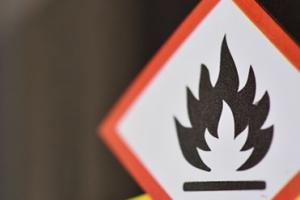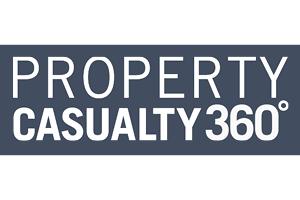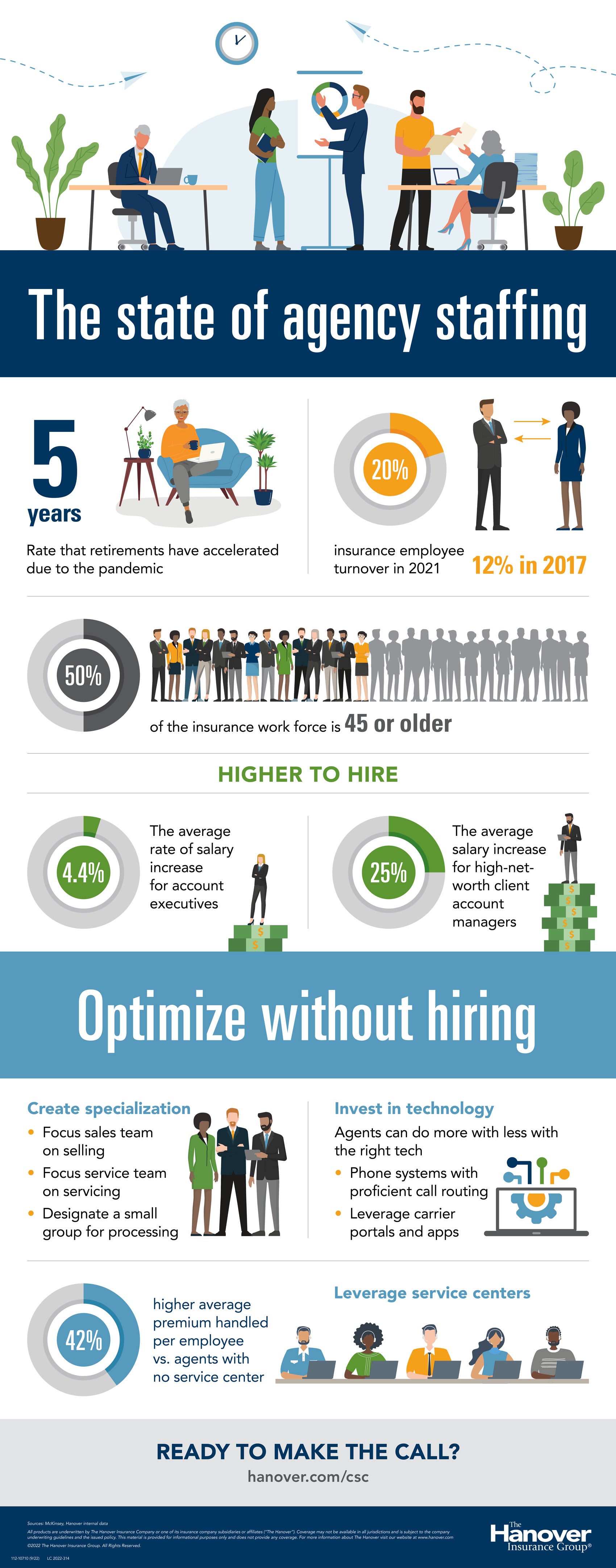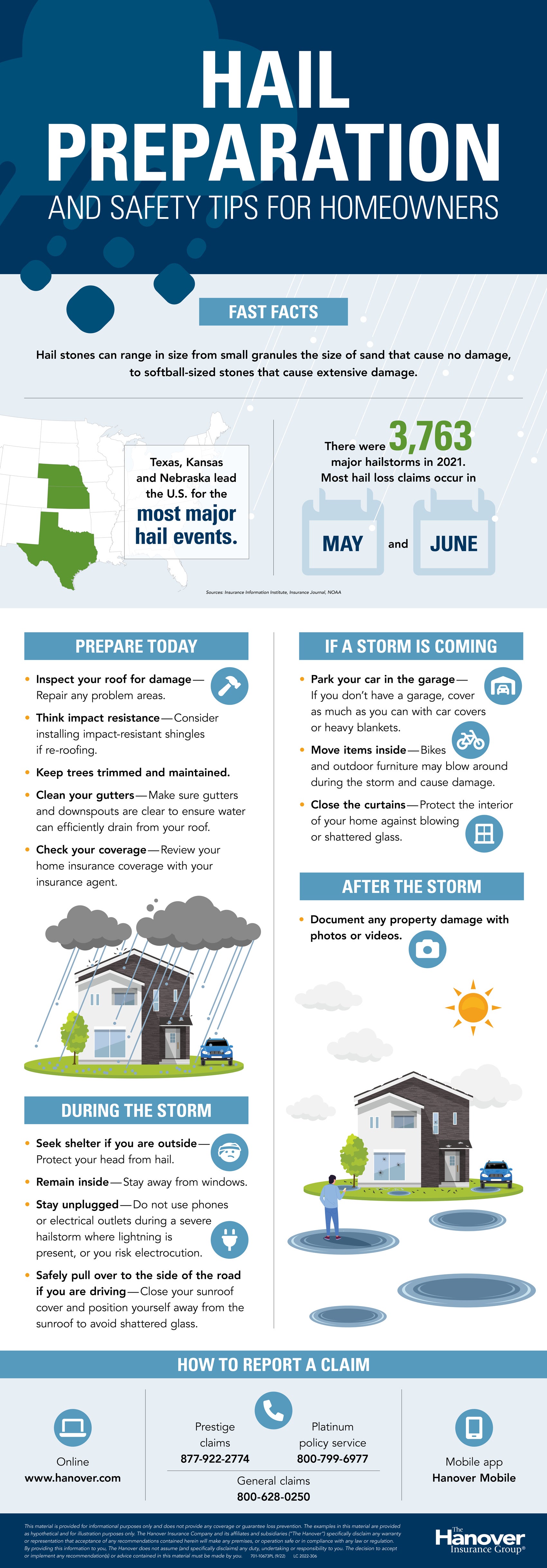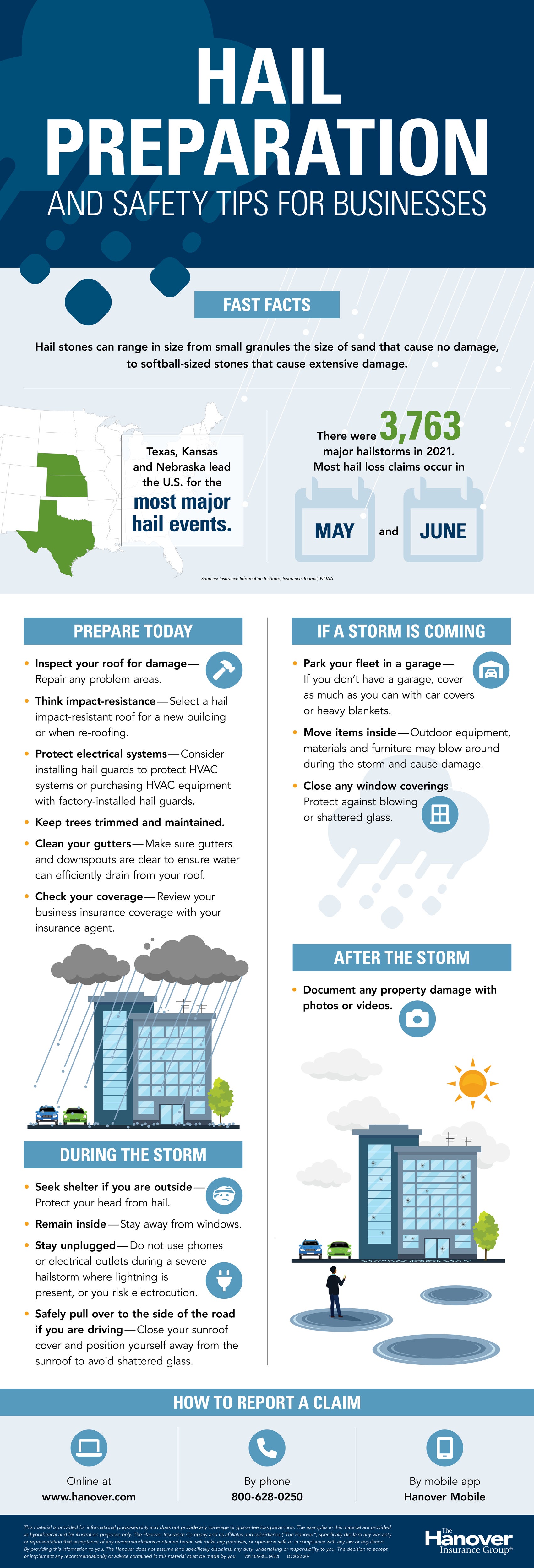Fire extinguishing systems for computer equipment facilities
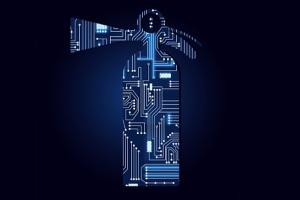
Server rooms can pose a substantial fire risk to businesses of all sizes. They are filled with power cords, electrical wires, combustible materials and equipment that can overheat or spark. Fires can occur within the digital equipment, wires, cables, HVAC equipment, raised floors, suspended ceilings, and other combustibles found in server rooms. Even with precautions in place, there is still a chance that a fire can occur and result in significant downtime for a business. According to the National Archives & Records Administration in Washington, 93 percent of companies that lost their data center for 10 days or more due to a disaster filed for bankruptcy within one year of the disaster. For this reason, fire suppression systems are recommended to mitigate the overall damage and reduce downtime resulting from a server room fire.
To protect electronic and other computer equipment, there are two primary types of automatic fire suppression systems that can be used: water based and gaseous agent. Automatic systems react to a rapid rise in heat, or fire situation, without any human intervention. Each type of system has inherent advantages and disadvantages. The following is a summary of these systems, their basic operational concepts, and property damage concerns.
Automatic water-based sprinkler systems
Wet pipe systems
In a wet pipe sprinkler system, the sprinkler heads connect to pipes that are filled with pressurized water. When a fire is detected, the sprinkler system activates automatically to extinguish the fire. Wet pipe systems are a very traditional type of fire suppression system and they are the most common type. They are particularly popular because they are low cost, may already exist in the server room in the first place, and they are effective. Once they have been activated, they will continue to expel water until they have been shut off. While it is a popular choice because of its ease of installation and optimal protection, the main problem with water sprinklers is that they can cause significant damage to the equipment. With the goal of remaining operational and maximizing uptime while preventing catastrophic fire, dramatic water damage could still lead to downtime. Additionally, water sprinklers could accidentally become activated and cause unnecessary damage. And, while sprinklers systems are inexpensive, the water damage that they cause is not.
For this reason, many data centers and server rooms implement pre-action water sprinklers.
Pre-action systems
Pre-action sprinkler systems are water-based systems occasionally used in server rooms for fire protection. The benefit to the pre-action system is that the water is not stored in the sprinkler pipes, reducing the risk of pipes leaking and causing damage to the equipment. Even as a water-based system, pre-action systems do have a lowered risk of water damage due to false alarms, as the pre-action system requires two separate events in order for water to flow out of the sprinkler system; first, the smoke detectors must identify a developing fire which releases the pre-action valve allowing water to flow into the sprinkler pipes, second, the sprinkler heads must be activated by heat to allow water to flow out into the room. This can typically give personnel a chance to investigate the alarm before water flows. Additionally, the alarm can be interlocked to shut down critical equipment before sprinkler heads are activated. While these precautions do reduce the chance of water damage in the event of a faulty system or false alarm, if an actual fire occurs water damage is guaranteed.
Water mist systems
Water mist systems work by both cooling the room temperature and displacing oxygen with steam. Like other fire protection systems, water mist systems naturally use water, with one key difference, that is, smaller droplets. According to the National Fire Protection Association (NFPA), “water mist” consists of droplets with a diameter less than 1,000 microns (1 millimeter) each. That's roughly a fifth of the size of the droplets made by standard fire sprinkler systems.
By spraying large numbers of tiny droplets, water mist fire protection systems create a large water surface area that can more readily lower temperatures. When these tiny droplets meet hot air, they evaporate and turn to steam. Steam can absorb more heat per unit of time than larger water droplets, therefore reducing the temperature of the flames faster. Steam also displaces the oxygen in the room so that the fire is suffocated and extinguished.
There are four different applications related to water mist systems:
- Local-application water mist systems, which spray directly on a specific object or hazard.
- Occupancy protection systems, which are installed throughout a building or a portion of a building.
- Total compartment application water mist systems. All nozzles (sprinkler heads) activate at the same time, providing complete protection of an enclosure or space.
- Zoned application systems, a variation on total compartment application systems, activate throughout a given zone or region within a given space.
Over the past decade, there has been substantial research done regarding water mist technology in fire suppression applications when extinguishing fires in electronic equipment and computer rooms. This research shows that water mist systems can be just as effective at slowing the spread of fire without the cleanup that comes with dry chemical systems. Testing the system also becomes significantly easier than dry chemical systems because of the discharging of dry chemicals vs. water.
Gaseous agent systems
Gaseous fire suppression systems work in similar ways as water sprinklers: smoke detectors signal the presence of a fire, triggering the release of a gaseous agent. However, instead of smothering the flames, as water does, gaseous methods fill the area with unreactive gases that dilute the oxygen level in the room. Once the oxygen level reaches a low enough point, the fire is no longer able to burn and simply goes out. As a result, the fire is put out without causing any additional damage to the computer equipment. Despite the fact that gaseous systems alter the amount of oxygen in the area, the oxygen levels are maintained at a level in which individuals are still able to safely evacuate the premises.
The gaseous systems use either inert, clean agent, or carbon dioxide gas.
Inert gaseous systems
An inert gas system uses a mixture of argon and nitrogen gases to decrease oxygen levels present in the room which naturally puts out the fire. A drawback to inert systems is they have a large footprint due to the amount of gas cylinders needed to effectively saturate the given area. Because sounds over 130 decibels destroy hard drives in a data center, the system requires special nozzles to muffle the powerful sound given off when the inert system activates.
These systems are non-ozone depleting with short atmospheric lives. They are non-conductive, as well as non-corrosive which protects against damage caused by the act of extinguishing the fire as with other suppression agents like chemicals and water. In addition, they leave no residue and, as a result, avoid costly and time-consuming post-fire cleanups.
Clean agent systems
Clean agent fire suppression systems use gas that's designed to extinguish fires shortly after they've started. As the name suggests, these systems are “clean,” so they leave no residue behind making them ideal for valuable electronics and other delicate environments. Like fire sprinklers, these systems have a piping system installed throughout the room. The system activates through smoke and heat detection, and the clean agent gas disperses evenly throughout the room through nozzles. These systems are total flood or engineered systems.
There are several types of common clean agent fire safety systems that can be implemented based on the environment and assets being protected.
The two common clean agent gas systems are Novec 1230 and FM-200. They suppress the fire by reducing the heat of the fire through absorption. These gases have zero ozone depletion, which makes them safe for the environment and around humans. The physical footprint is smaller than inert gas systems because they don’t require as much agent to fill up an entire room.
Clean agent gases are electrically non-conductive, non-corrosive, and leave no residue upon evaporation. This makes them the ideal fire suppression agents in data centers.
Carbon dioxide systems
CO2 extinguishing system is a gaseous agent that is colorless, odorless, and electrically non-conductive, leaving no residue behind after deployment. CO2 systems work as inert gas and clean agent systems do in that they deploy a gas through nozzles, filling the protected space, and reduce oxygen levels below those which support combustion, effectively suppressing the fire while at the same time not damaging sensitive electronic equipment.
While CO2 fire suppression systems are highly effective at suppressing fires, the CO2 agent also poses a health risk when compared to the other agents. At 7.5% concentration, CO2 can cause asphyxiation to humans. Most CO2 fire suppression systems are designed to have 34% CO2 concentrations for a total flood of the protected space. Due to the obvious dangers of CO2, the CO2 fire suppression systems are required to have certain life safety devices to protect personnel around or near the protected spaces. One of the life safety devices is a pneumatic siren that warns people around the area that the CO2 will be discharging from the suppression system. In addition to these safety mechanisms, it is critical to train all employees and personnel in the building on the health risks of a CO2 fire suppression system, as well as appropriate evacuation procedures in the event of a fire.
Summary
In order to select the most appropriate fire suppression for your computer room, advantages and disadvantages of each should be evaluated. Due to the variables of each fire, property damage from the suppression system cannot be fully estimated. In general, assuming proper installation, the additional property damage from fire suppression systems activation is minimal in comparison to the losses without such protection.
This material is provided for informational purposes only and does not provide any coverage or guarantee loss prevention. The examples in this material are provided as hypothetical and for illustration purposes only. The Hanover Insurance Company and its affiliates and subsidiaries (“The Hanover”) specifically disclaim any warranty or representation that acceptance of any recommendations contained herein will make any premises, or operation safe or in compliance with any law or regulation. By providing this information to you. The Hanover does not assume (and specifically disclaims) any duty, undertaking or responsibility to you. The decision to accept or implement any recommendation(s) or advice contained in this material must be made by you.
Fire extinguishing systems for computer equipment facilities
Server rooms can pose a substantial fire risk to businesses of all sizes. They are filled with power cords, electrical wires, combustible materials and equipment that can overheat or spark. Fires can occur within the digital equipment, wires, cables, HVAC equipment, raised floors, suspended ceilings, and other combustibles found in server rooms. Even with precautions in place, there is still a chance that a fire can occur and result in significant downtime for a business. According to the National Archives & Records Administration in Washington, 93 percent of companies that lost their data center for 10 days or more due to a disaster filed for bankruptcy within one year of the disaster. For this reason, fire suppression systems are recommended to mitigate the overall damage and reduce downtime resulting from a server room fire.
To protect electronic and other computer equipment, there are two primary types of automatic fire suppression systems that can be used: water based and gaseous agent. Automatic systems react to a rapid rise in heat, or fire situation, without any human intervention. Each type of system has inherent advantages and disadvantages. The following is a summary of these systems, their basic operational concepts, and property damage concerns.
Automatic water-based sprinkler systems
Wet pipe systems
In a wet pipe sprinkler system, the sprinkler heads connect to pipes that are filled with pressurized water. When a fire is detected, the sprinkler system activates automatically to extinguish the fire. Wet pipe systems are a very traditional type of fire suppression system and they are the most common type. They are particularly popular because they are low cost, may already exist in the server room in the first place, and they are effective. Once they have been activated, they will continue to expel water until they have been shut off. While it is a popular choice because of its ease of installation and optimal protection, the main problem with water sprinklers is that they can cause significant damage to the equipment. With the goal of remaining operational and maximizing uptime while preventing catastrophic fire, dramatic water damage could still lead to downtime. Additionally, water sprinklers could accidentally become activated and cause unnecessary damage. And, while sprinklers systems are inexpensive, the water damage that they cause is not.
For this reason, many data centers and server rooms implement pre-action water sprinklers.
Pre-action systems
Pre-action sprinkler systems are water-based systems occasionally used in server rooms for fire protection. The benefit to the pre-action system is that the water is not stored in the sprinkler pipes, reducing the risk of pipes leaking and causing damage to the equipment. Even as a water-based system, pre-action systems do have a lowered risk of water damage due to false alarms, as the pre-action system requires two separate events in order for water to flow out of the sprinkler system; first, the smoke detectors must identify a developing fire which releases the pre-action valve allowing water to flow into the sprinkler pipes, second, the sprinkler heads must be activated by heat to allow water to flow out into the room. This can typically give personnel a chance to investigate the alarm before water flows. Additionally, the alarm can be interlocked to shut down critical equipment before sprinkler heads are activated. While these precautions do reduce the chance of water damage in the event of a faulty system or false alarm, if an actual fire occurs water damage is guaranteed.
Water mist systems
Water mist systems work by both cooling the room temperature and displacing oxygen with steam. Like other fire protection systems, water mist systems naturally use water, with one key difference, that is, smaller droplets. According to the National Fire Protection Association (NFPA), “water mist” consists of droplets with a diameter less than 1,000 microns (1 millimeter) each. That's roughly a fifth of the size of the droplets made by standard fire sprinkler systems.
By spraying large numbers of tiny droplets, water mist fire protection systems create a large water surface area that can more readily lower temperatures. When these tiny droplets meet hot air, they evaporate and turn to steam. Steam can absorb more heat per unit of time than larger water droplets, therefore reducing the temperature of the flames faster. Steam also displaces the oxygen in the room so that the fire is suffocated and extinguished.
There are four different applications related to water mist systems:
- Local-application water mist systems, which spray directly on a specific object or hazard.
- Occupancy protection systems, which are installed throughout a building or a portion of a building.
- Total compartment application water mist systems. All nozzles (sprinkler heads) activate at the same time, providing complete protection of an enclosure or space.
- Zoned application systems, a variation on total compartment application systems, activate throughout a given zone or region within a given space.
Over the past decade, there has been substantial research done regarding water mist technology in fire suppression applications when extinguishing fires in electronic equipment and computer rooms. This research shows that water mist systems can be just as effective at slowing the spread of fire without the cleanup that comes with dry chemical systems. Testing the system also becomes significantly easier than dry chemical systems because of the discharging of dry chemicals vs. water.
Gaseous agent systems
Gaseous fire suppression systems work in similar ways as water sprinklers: smoke detectors signal the presence of a fire, triggering the release of a gaseous agent. However, instead of smothering the flames, as water does, gaseous methods fill the area with unreactive gases that dilute the oxygen level in the room. Once the oxygen level reaches a low enough point, the fire is no longer able to burn and simply goes out. As a result, the fire is put out without causing any additional damage to the computer equipment. Despite the fact that gaseous systems alter the amount of oxygen in the area, the oxygen levels are maintained at a level in which individuals are still able to safely evacuate the premises.
The gaseous systems use either inert, clean agent, or carbon dioxide gas.
Inert gaseous systems
An inert gas system uses a mixture of argon and nitrogen gases to decrease oxygen levels present in the room which naturally puts out the fire. A drawback to inert systems is they have a large footprint due to the amount of gas cylinders needed to effectively saturate the given area. Because sounds over 130 decibels destroy hard drives in a data center, the system requires special nozzles to muffle the powerful sound given off when the inert system activates.
These systems are non-ozone depleting with short atmospheric lives. They are non-conductive, as well as non-corrosive which protects against damage caused by the act of extinguishing the fire as with other suppression agents like chemicals and water. In addition, they leave no residue and, as a result, avoid costly and time-consuming post-fire cleanups.
Clean agent systems
Clean agent fire suppression systems use gas that's designed to extinguish fires shortly after they've started. As the name suggests, these systems are “clean,” so they leave no residue behind making them ideal for valuable electronics and other delicate environments. Like fire sprinklers, these systems have a piping system installed throughout the room. The system activates through smoke and heat detection, and the clean agent gas disperses evenly throughout the room through nozzles. These systems are total flood or engineered systems.
There are several types of common clean agent fire safety systems that can be implemented based on the environment and assets being protected.
The two common clean agent gas systems are Novec 1230 and FM-200. They suppress the fire by reducing the heat of the fire through absorption. These gases have zero ozone depletion, which makes them safe for the environment and around humans. The physical footprint is smaller than inert gas systems because they don’t require as much agent to fill up an entire room.
Clean agent gases are electrically non-conductive, non-corrosive, and leave no residue upon evaporation. This makes them the ideal fire suppression agents in data centers.
Carbon dioxide systems
CO2 extinguishing system is a gaseous agent that is colorless, odorless, and electrically non-conductive, leaving no residue behind after deployment. CO2 systems work as inert gas and clean agent systems do in that they deploy a gas through nozzles, filling the protected space, and reduce oxygen levels below those which support combustion, effectively suppressing the fire while at the same time not damaging sensitive electronic equipment.
While CO2 fire suppression systems are highly effective at suppressing fires, the CO2 agent also poses a health risk when compared to the other agents. At 7.5% concentration, CO2 can cause asphyxiation to humans. Most CO2 fire suppression systems are designed to have 34% CO2 concentrations for a total flood of the protected space. Due to the obvious dangers of CO2, the CO2 fire suppression systems are required to have certain life safety devices to protect personnel around or near the protected spaces. One of the life safety devices is a pneumatic siren that warns people around the area that the CO2 will be discharging from the suppression system. In addition to these safety mechanisms, it is critical to train all employees and personnel in the building on the health risks of a CO2 fire suppression system, as well as appropriate evacuation procedures in the event of a fire.
Summary
In order to select the most appropriate fire suppression for your computer room, advantages and disadvantages of each should be evaluated. Due to the variables of each fire, property damage from the suppression system cannot be fully estimated. In general, assuming proper installation, the additional property damage from fire suppression systems activation is minimal in comparison to the losses without such protection.
This material is provided for informational purposes only and does not provide any coverage or guarantee loss prevention. The examples in this material are provided as hypothetical and for illustration purposes only. The Hanover Insurance Company and its affiliates and subsidiaries (“The Hanover”) specifically disclaim any warranty or representation that acceptance of any recommendations contained herein will make any premises, or operation safe or in compliance with any law or regulation. By providing this information to you. The Hanover does not assume (and specifically disclaims) any duty, undertaking or responsibility to you. The decision to accept or implement any recommendation(s) or advice contained in this material must be made by you.
Fire extinguishing systems for computer equipment facilities
Server rooms can pose a substantial fire risk to businesses of all sizes. They are filled with power cords, electrical wires, combustible materials and equipment that can overheat or spark. Fires can occur within the digital equipment, wires, cables, HVAC equipment, raised floors, suspended ceilings, and other combustibles found in server rooms. Even with precautions in place, there is still a chance that a fire can occur and result in significant downtime for a business. According to the National Archives & Records Administration in Washington, 93 percent of companies that lost their data center for 10 days or more due to a disaster filed for bankruptcy within one year of the disaster. For this reason, fire suppression systems are recommended to mitigate the overall damage and reduce downtime resulting from a server room fire.
To protect electronic and other computer equipment, there are two primary types of automatic fire suppression systems that can be used: water based and gaseous agent. Automatic systems react to a rapid rise in heat, or fire situation, without any human intervention. Each type of system has inherent advantages and disadvantages. The following is a summary of these systems, their basic operational concepts, and property damage concerns.
Automatic water-based sprinkler systems
Wet pipe systems
In a wet pipe sprinkler system, the sprinkler heads connect to pipes that are filled with pressurized water. When a fire is detected, the sprinkler system activates automatically to extinguish the fire. Wet pipe systems are a very traditional type of fire suppression system and they are the most common type. They are particularly popular because they are low cost, may already exist in the server room in the first place, and they are effective. Once they have been activated, they will continue to expel water until they have been shut off. While it is a popular choice because of its ease of installation and optimal protection, the main problem with water sprinklers is that they can cause significant damage to the equipment. With the goal of remaining operational and maximizing uptime while preventing catastrophic fire, dramatic water damage could still lead to downtime. Additionally, water sprinklers could accidentally become activated and cause unnecessary damage. And, while sprinklers systems are inexpensive, the water damage that they cause is not.
For this reason, many data centers and server rooms implement pre-action water sprinklers.
Pre-action systems
Pre-action sprinkler systems are water-based systems occasionally used in server rooms for fire protection. The benefit to the pre-action system is that the water is not stored in the sprinkler pipes, reducing the risk of pipes leaking and causing damage to the equipment. Even as a water-based system, pre-action systems do have a lowered risk of water damage due to false alarms, as the pre-action system requires two separate events in order for water to flow out of the sprinkler system; first, the smoke detectors must identify a developing fire which releases the pre-action valve allowing water to flow into the sprinkler pipes, second, the sprinkler heads must be activated by heat to allow water to flow out into the room. This can typically give personnel a chance to investigate the alarm before water flows. Additionally, the alarm can be interlocked to shut down critical equipment before sprinkler heads are activated. While these precautions do reduce the chance of water damage in the event of a faulty system or false alarm, if an actual fire occurs water damage is guaranteed.
Water mist systems
Water mist systems work by both cooling the room temperature and displacing oxygen with steam. Like other fire protection systems, water mist systems naturally use water, with one key difference, that is, smaller droplets. According to the National Fire Protection Association (NFPA), “water mist” consists of droplets with a diameter less than 1,000 microns (1 millimeter) each. That's roughly a fifth of the size of the droplets made by standard fire sprinkler systems.
By spraying large numbers of tiny droplets, water mist fire protection systems create a large water surface area that can more readily lower temperatures. When these tiny droplets meet hot air, they evaporate and turn to steam. Steam can absorb more heat per unit of time than larger water droplets, therefore reducing the temperature of the flames faster. Steam also displaces the oxygen in the room so that the fire is suffocated and extinguished.
There are four different applications related to water mist systems:
- Local-application water mist systems, which spray directly on a specific object or hazard.
- Occupancy protection systems, which are installed throughout a building or a portion of a building.
- Total compartment application water mist systems. All nozzles (sprinkler heads) activate at the same time, providing complete protection of an enclosure or space.
- Zoned application systems, a variation on total compartment application systems, activate throughout a given zone or region within a given space.
Over the past decade, there has been substantial research done regarding water mist technology in fire suppression applications when extinguishing fires in electronic equipment and computer rooms. This research shows that water mist systems can be just as effective at slowing the spread of fire without the cleanup that comes with dry chemical systems. Testing the system also becomes significantly easier than dry chemical systems because of the discharging of dry chemicals vs. water.
Gaseous agent systems
Gaseous fire suppression systems work in similar ways as water sprinklers: smoke detectors signal the presence of a fire, triggering the release of a gaseous agent. However, instead of smothering the flames, as water does, gaseous methods fill the area with unreactive gases that dilute the oxygen level in the room. Once the oxygen level reaches a low enough point, the fire is no longer able to burn and simply goes out. As a result, the fire is put out without causing any additional damage to the computer equipment. Despite the fact that gaseous systems alter the amount of oxygen in the area, the oxygen levels are maintained at a level in which individuals are still able to safely evacuate the premises.
The gaseous systems use either inert, clean agent, or carbon dioxide gas.
Inert gaseous systems
An inert gas system uses a mixture of argon and nitrogen gases to decrease oxygen levels present in the room which naturally puts out the fire. A drawback to inert systems is they have a large footprint due to the amount of gas cylinders needed to effectively saturate the given area. Because sounds over 130 decibels destroy hard drives in a data center, the system requires special nozzles to muffle the powerful sound given off when the inert system activates.
These systems are non-ozone depleting with short atmospheric lives. They are non-conductive, as well as non-corrosive which protects against damage caused by the act of extinguishing the fire as with other suppression agents like chemicals and water. In addition, they leave no residue and, as a result, avoid costly and time-consuming post-fire cleanups.
Clean agent systems
Clean agent fire suppression systems use gas that's designed to extinguish fires shortly after they've started. As the name suggests, these systems are “clean,” so they leave no residue behind making them ideal for valuable electronics and other delicate environments. Like fire sprinklers, these systems have a piping system installed throughout the room. The system activates through smoke and heat detection, and the clean agent gas disperses evenly throughout the room through nozzles. These systems are total flood or engineered systems.
There are several types of common clean agent fire safety systems that can be implemented based on the environment and assets being protected.
The two common clean agent gas systems are Novec 1230 and FM-200. They suppress the fire by reducing the heat of the fire through absorption. These gases have zero ozone depletion, which makes them safe for the environment and around humans. The physical footprint is smaller than inert gas systems because they don’t require as much agent to fill up an entire room.
Clean agent gases are electrically non-conductive, non-corrosive, and leave no residue upon evaporation. This makes them the ideal fire suppression agents in data centers.
Carbon dioxide systems
CO2 extinguishing system is a gaseous agent that is colorless, odorless, and electrically non-conductive, leaving no residue behind after deployment. CO2 systems work as inert gas and clean agent systems do in that they deploy a gas through nozzles, filling the protected space, and reduce oxygen levels below those which support combustion, effectively suppressing the fire while at the same time not damaging sensitive electronic equipment.
While CO2 fire suppression systems are highly effective at suppressing fires, the CO2 agent also poses a health risk when compared to the other agents. At 7.5% concentration, CO2 can cause asphyxiation to humans. Most CO2 fire suppression systems are designed to have 34% CO2 concentrations for a total flood of the protected space. Due to the obvious dangers of CO2, the CO2 fire suppression systems are required to have certain life safety devices to protect personnel around or near the protected spaces. One of the life safety devices is a pneumatic siren that warns people around the area that the CO2 will be discharging from the suppression system. In addition to these safety mechanisms, it is critical to train all employees and personnel in the building on the health risks of a CO2 fire suppression system, as well as appropriate evacuation procedures in the event of a fire.
Summary
In order to select the most appropriate fire suppression for your computer room, advantages and disadvantages of each should be evaluated. Due to the variables of each fire, property damage from the suppression system cannot be fully estimated. In general, assuming proper installation, the additional property damage from fire suppression systems activation is minimal in comparison to the losses without such protection.
This material is provided for informational purposes only and does not provide any coverage or guarantee loss prevention. The examples in this material are provided as hypothetical and for illustration purposes only. The Hanover Insurance Company and its affiliates and subsidiaries (“The Hanover”) specifically disclaim any warranty or representation that acceptance of any recommendations contained herein will make any premises, or operation safe or in compliance with any law or regulation. By providing this information to you. The Hanover does not assume (and specifically disclaims) any duty, undertaking or responsibility to you. The decision to accept or implement any recommendation(s) or advice contained in this material must be made by you.
Fire extinguishing systems for computer equipment facilities
Server rooms can pose a substantial fire risk to businesses of all sizes. They are filled with power cords, electrical wires, combustible materials and equipment that can overheat or spark. Fires can occur within the digital equipment, wires, cables, HVAC equipment, raised floors, suspended ceilings, and other combustibles found in server rooms. Even with precautions in place, there is still a chance that a fire can occur and result in significant downtime for a business. According to the National Archives & Records Administration in Washington, 93 percent of companies that lost their data center for 10 days or more due to a disaster filed for bankruptcy within one year of the disaster. For this reason, fire suppression systems are recommended to mitigate the overall damage and reduce downtime resulting from a server room fire.
To protect electronic and other computer equipment, there are two primary types of automatic fire suppression systems that can be used: water based and gaseous agent. Automatic systems react to a rapid rise in heat, or fire situation, without any human intervention. Each type of system has inherent advantages and disadvantages. The following is a summary of these systems, their basic operational concepts, and property damage concerns.
Automatic water-based sprinkler systems
Wet pipe systems
In a wet pipe sprinkler system, the sprinkler heads connect to pipes that are filled with pressurized water. When a fire is detected, the sprinkler system activates automatically to extinguish the fire. Wet pipe systems are a very traditional type of fire suppression system and they are the most common type. They are particularly popular because they are low cost, may already exist in the server room in the first place, and they are effective. Once they have been activated, they will continue to expel water until they have been shut off. While it is a popular choice because of its ease of installation and optimal protection, the main problem with water sprinklers is that they can cause significant damage to the equipment. With the goal of remaining operational and maximizing uptime while preventing catastrophic fire, dramatic water damage could still lead to downtime. Additionally, water sprinklers could accidentally become activated and cause unnecessary damage. And, while sprinklers systems are inexpensive, the water damage that they cause is not.
For this reason, many data centers and server rooms implement pre-action water sprinklers.
Pre-action systems
Pre-action sprinkler systems are water-based systems occasionally used in server rooms for fire protection. The benefit to the pre-action system is that the water is not stored in the sprinkler pipes, reducing the risk of pipes leaking and causing damage to the equipment. Even as a water-based system, pre-action systems do have a lowered risk of water damage due to false alarms, as the pre-action system requires two separate events in order for water to flow out of the sprinkler system; first, the smoke detectors must identify a developing fire which releases the pre-action valve allowing water to flow into the sprinkler pipes, second, the sprinkler heads must be activated by heat to allow water to flow out into the room. This can typically give personnel a chance to investigate the alarm before water flows. Additionally, the alarm can be interlocked to shut down critical equipment before sprinkler heads are activated. While these precautions do reduce the chance of water damage in the event of a faulty system or false alarm, if an actual fire occurs water damage is guaranteed.
Water mist systems
Water mist systems work by both cooling the room temperature and displacing oxygen with steam. Like other fire protection systems, water mist systems naturally use water, with one key difference, that is, smaller droplets. According to the National Fire Protection Association (NFPA), “water mist” consists of droplets with a diameter less than 1,000 microns (1 millimeter) each. That's roughly a fifth of the size of the droplets made by standard fire sprinkler systems.
By spraying large numbers of tiny droplets, water mist fire protection systems create a large water surface area that can more readily lower temperatures. When these tiny droplets meet hot air, they evaporate and turn to steam. Steam can absorb more heat per unit of time than larger water droplets, therefore reducing the temperature of the flames faster. Steam also displaces the oxygen in the room so that the fire is suffocated and extinguished.
There are four different applications related to water mist systems:
- Local-application water mist systems, which spray directly on a specific object or hazard.
- Occupancy protection systems, which are installed throughout a building or a portion of a building.
- Total compartment application water mist systems. All nozzles (sprinkler heads) activate at the same time, providing complete protection of an enclosure or space.
- Zoned application systems, a variation on total compartment application systems, activate throughout a given zone or region within a given space.
Over the past decade, there has been substantial research done regarding water mist technology in fire suppression applications when extinguishing fires in electronic equipment and computer rooms. This research shows that water mist systems can be just as effective at slowing the spread of fire without the cleanup that comes with dry chemical systems. Testing the system also becomes significantly easier than dry chemical systems because of the discharging of dry chemicals vs. water.
Gaseous agent systems
Gaseous fire suppression systems work in similar ways as water sprinklers: smoke detectors signal the presence of a fire, triggering the release of a gaseous agent. However, instead of smothering the flames, as water does, gaseous methods fill the area with unreactive gases that dilute the oxygen level in the room. Once the oxygen level reaches a low enough point, the fire is no longer able to burn and simply goes out. As a result, the fire is put out without causing any additional damage to the computer equipment. Despite the fact that gaseous systems alter the amount of oxygen in the area, the oxygen levels are maintained at a level in which individuals are still able to safely evacuate the premises.
The gaseous systems use either inert, clean agent, or carbon dioxide gas.
Inert gaseous systems
An inert gas system uses a mixture of argon and nitrogen gases to decrease oxygen levels present in the room which naturally puts out the fire. A drawback to inert systems is they have a large footprint due to the amount of gas cylinders needed to effectively saturate the given area. Because sounds over 130 decibels destroy hard drives in a data center, the system requires special nozzles to muffle the powerful sound given off when the inert system activates.
These systems are non-ozone depleting with short atmospheric lives. They are non-conductive, as well as non-corrosive which protects against damage caused by the act of extinguishing the fire as with other suppression agents like chemicals and water. In addition, they leave no residue and, as a result, avoid costly and time-consuming post-fire cleanups.
Clean agent systems
Clean agent fire suppression systems use gas that's designed to extinguish fires shortly after they've started. As the name suggests, these systems are “clean,” so they leave no residue behind making them ideal for valuable electronics and other delicate environments. Like fire sprinklers, these systems have a piping system installed throughout the room. The system activates through smoke and heat detection, and the clean agent gas disperses evenly throughout the room through nozzles. These systems are total flood or engineered systems.
There are several types of common clean agent fire safety systems that can be implemented based on the environment and assets being protected.
The two common clean agent gas systems are Novec 1230 and FM-200. They suppress the fire by reducing the heat of the fire through absorption. These gases have zero ozone depletion, which makes them safe for the environment and around humans. The physical footprint is smaller than inert gas systems because they don’t require as much agent to fill up an entire room.
Clean agent gases are electrically non-conductive, non-corrosive, and leave no residue upon evaporation. This makes them the ideal fire suppression agents in data centers.
Carbon dioxide systems
CO2 extinguishing system is a gaseous agent that is colorless, odorless, and electrically non-conductive, leaving no residue behind after deployment. CO2 systems work as inert gas and clean agent systems do in that they deploy a gas through nozzles, filling the protected space, and reduce oxygen levels below those which support combustion, effectively suppressing the fire while at the same time not damaging sensitive electronic equipment.
While CO2 fire suppression systems are highly effective at suppressing fires, the CO2 agent also poses a health risk when compared to the other agents. At 7.5% concentration, CO2 can cause asphyxiation to humans. Most CO2 fire suppression systems are designed to have 34% CO2 concentrations for a total flood of the protected space. Due to the obvious dangers of CO2, the CO2 fire suppression systems are required to have certain life safety devices to protect personnel around or near the protected spaces. One of the life safety devices is a pneumatic siren that warns people around the area that the CO2 will be discharging from the suppression system. In addition to these safety mechanisms, it is critical to train all employees and personnel in the building on the health risks of a CO2 fire suppression system, as well as appropriate evacuation procedures in the event of a fire.
Summary
In order to select the most appropriate fire suppression for your computer room, advantages and disadvantages of each should be evaluated. Due to the variables of each fire, property damage from the suppression system cannot be fully estimated. In general, assuming proper installation, the additional property damage from fire suppression systems activation is minimal in comparison to the losses without such protection.
This material is provided for informational purposes only and does not provide any coverage or guarantee loss prevention. The examples in this material are provided as hypothetical and for illustration purposes only. The Hanover Insurance Company and its affiliates and subsidiaries (“The Hanover”) specifically disclaim any warranty or representation that acceptance of any recommendations contained herein will make any premises, or operation safe or in compliance with any law or regulation. By providing this information to you. The Hanover does not assume (and specifically disclaims) any duty, undertaking or responsibility to you. The decision to accept or implement any recommendation(s) or advice contained in this material must be made by you.



